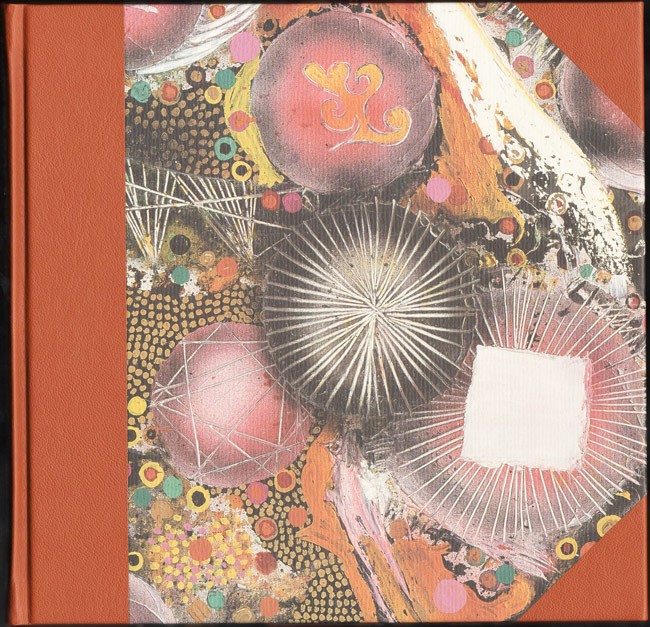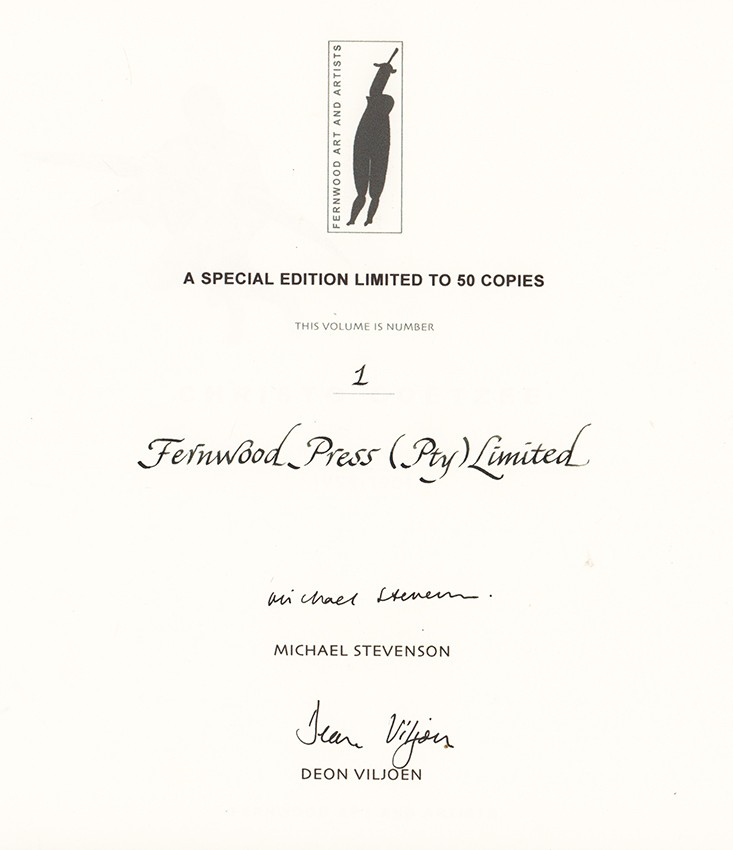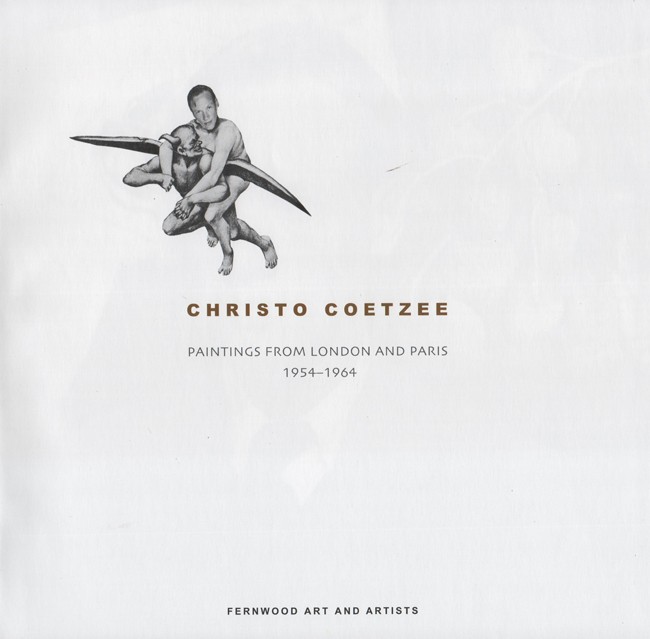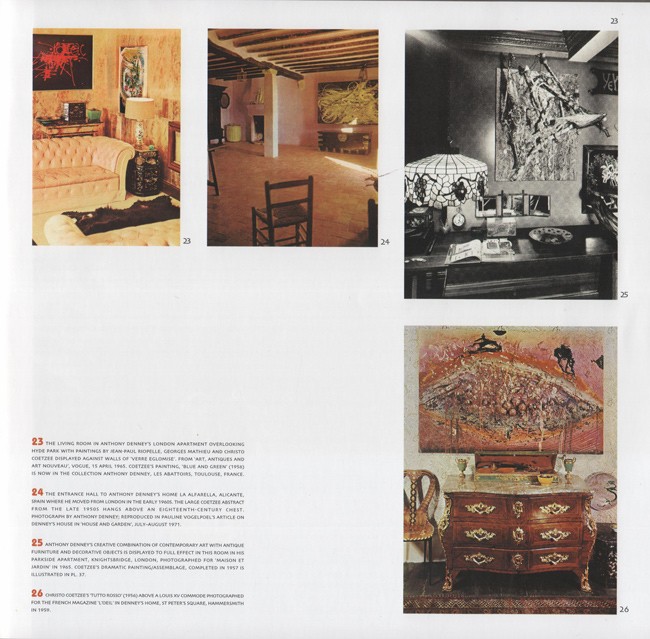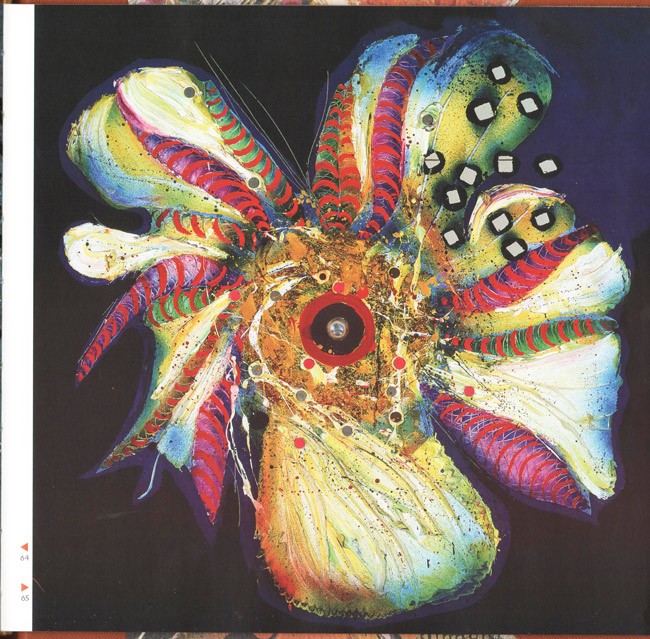Limited edition. 79 pages, frontispiece portrait of the artist, numerous other colour and black and white illustrations throughout, half brown leather titled gilt the spine, decorated paper-covered boards housed in a grey slipcase with leather lips and decorated with a plate sunk illustration, a fine copy.
The limitations page reads: A special edition limited to 100 copies. This volume 1 is presented to Fernwood Press (Pty) Ltd signed by the authors.
Christo Coetzee was born in Johannesburg on 24 March 1929. His father died when he was 10 years old, and he was raised by his mother and his two sisters who were 16 and 20 years older than him.
Growing up in Turffontein, Coetzee had no lack of material to spark his imagination, and he often spent his evenings making mud-sculptures in the garden after the five-o’clock-rains. During his childhood he built a miniature theatre complete with furniture and grand piano, and also made chessmen for his four-sided chessboard out of washers and screws which he glued together and painted in bright colours. A friend of Christo’s parents, Finie Basson, owned many interesting works of art, and Christo found inspiration in her collection. When he was 13, she gave Coetzee his first commission – a medium sized oil painting of pink and white roses – for which she paid him £5 (Binge-Coetzee in Ballot, 1999).
Coetzee attended Wits University from 1947 to 1950, and among his classmates were a number of artists with whom he would maintain friendships for many years: Cecil Skotnes, Esmé Berman and Gordon Vorster, among others. Also during his time at Wits, Christo was able to meet Alexis Preller and visit the studio of JH Pierneef.
After his graduation at the end of 1950, Coetzee had his first solo exhibition in Cape Town which was opened by John Paris of the SA National Art Gallery. He then travelled to London with a Postgraduate scholarship from Wits, where his talent was further developed under the guidance of Prof. William Coldstream at the Slade School of Art.
Coetzee’s first job in London, arranged for him by a friend, was as a salesman for a tobacco company, but he was unhappy there as the work was administrative. He turned to the Gimpel Art Gallery, where he visited regularly, and the two owners recommended that he get work at Robert Savage’s framing business where he would be in contact with young artists and the London art world. Here he was able to master methods of framing which he had learned previously, and he would later use these skills for his own art.
In 1956, through the mediation of the British Council, Coetzee received funds from the Italian government to go to Italy for the first four months of that year. During his time there, he met many interesting people in the art world, such as the Russian painter, Pavel Tchelitchew, and Italian artist, Alberto Burri.
There was no lack of recognition for Coetzee’s original ideas and practices in persevering along the route of Informal Abstraction. During the period 1958–1961 his work was exhibited at a number of important international group exhibitions in Osaka and Tokyo (Japan), in New Hampton, Pittsburgh and New York (USA) and in Turin (Italy). In addition, in 1959 the Galerie Stadler requested him to participate in a two-man exhibition with Lucio Fontana in Paris.
At the end of January 1961 Christo had his first solo exhibition at the Galerie Stadler, and then, immediately after, travelled back to Johannesburg to have his first exhibition in 10 years on home soil. He spent most of the next three years in Paris, and his second solo exhibition at the Galerie Stadler took place in 1963.
In 1975, the day after the opening of a solo exhibition of Coetzee’s work in Cape Town, the artist went back to the gallery and cut up 23 of his paintings in what he called an act of ‘construction’ rather than ‘destruction’. The press labelled him sensationalist and angry, but Christo lectured that there was a cycle of destruction and recreation in his creative approach. Four months after this ‘protest exhibition’, as Coetzee called it, he restructured (or ‘re-imaged’, in his own words) these same works by combining the fragments and pieces of the original artworks creating new pieces to be shown at the Rand Afrikaans University’s Gencor Gallery in Johannesburg.
A second retrospective exhibition of Coetzee’s works was held in the Pretoria Art Museum in 1983, showing 81 works from 1965 to 1983, and he was awarded a medal of honour from the Akademie vir Wetenskap en Kuns that same year. A third retrospective took place at the University of Stellenbosch on his seventieth birthday in 1999, and was accompanied by a book illustrating his work from the previous 3 decades.
Coetzee died in Tulbagh at the age of 71 in November of 2000. Coetzee was always searching for magical and transcendental moments while extending the perceptions of art. As he recalled, he endeavoured ‘to push the imagination … just a little bit more towards that particular interface where Art becomes something that it is not.’ (Stevenson & Viljoen, 2001). http://www.johansborman.co.za/artist-biographies/coetzee-christo/
- Overall Condition: A Fine Copy
- Size: 4to ( 320 x289mm)
- Sold By: Clarke's Africana & Rare Books
- Contact Person: Paul Mills
- Country: South Africa
- Email: [email protected]
- Telephone: 021 794 0600
- Preferred Payment Methods: Visa & Mastercard via PayGate secure links and Bank transfers.
- Trade Associations: ABA - ILAB, SABDA



